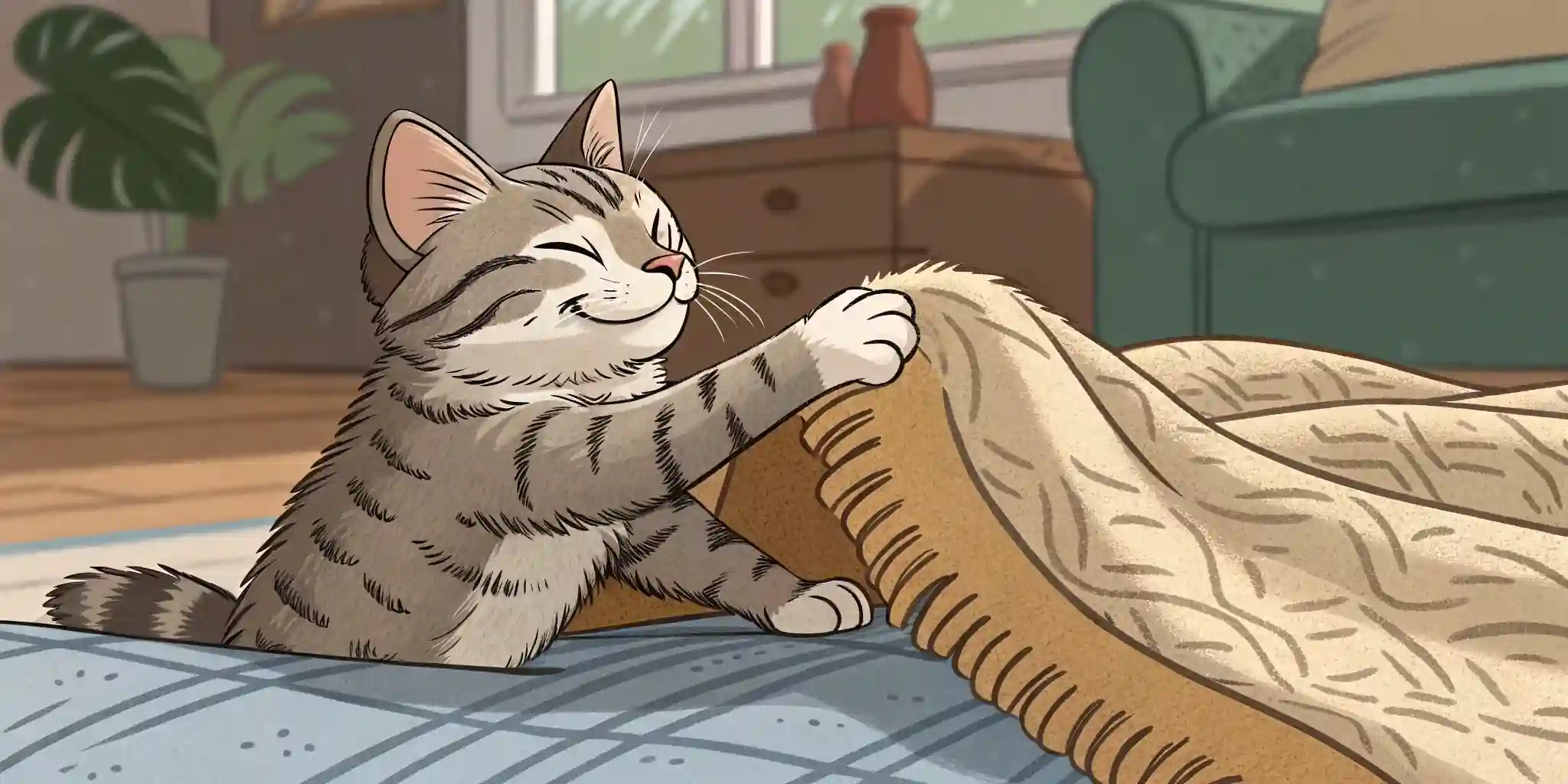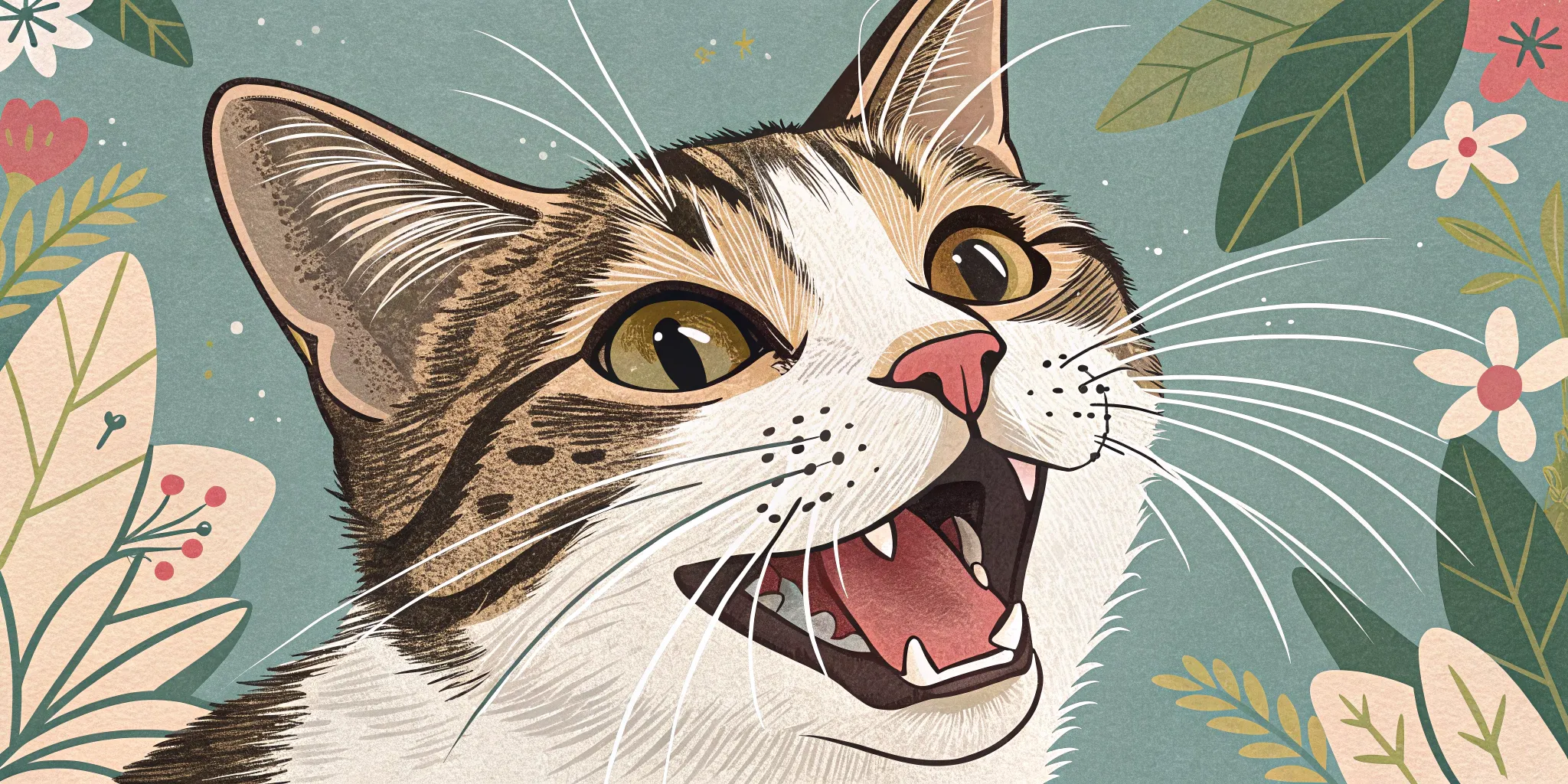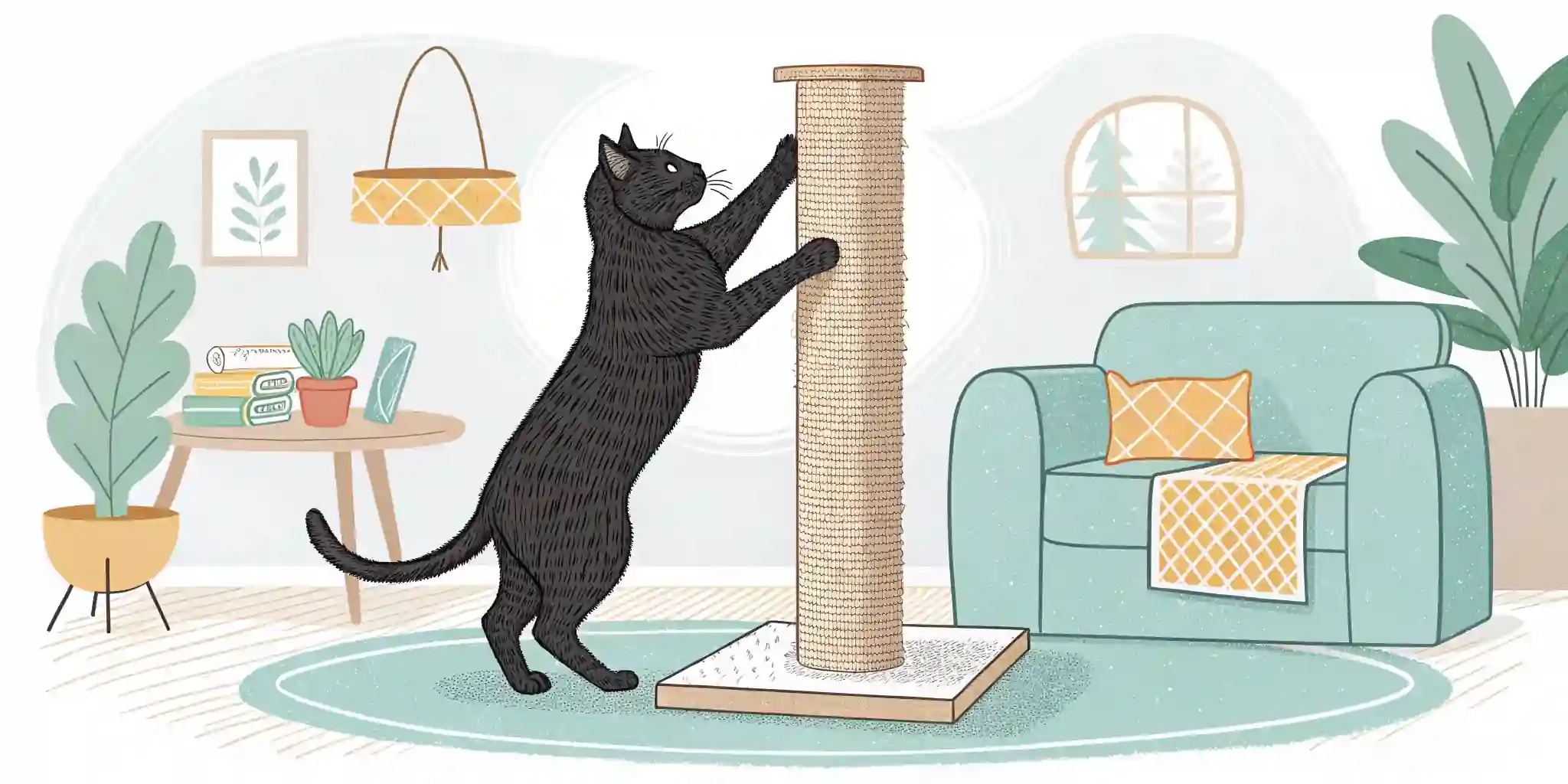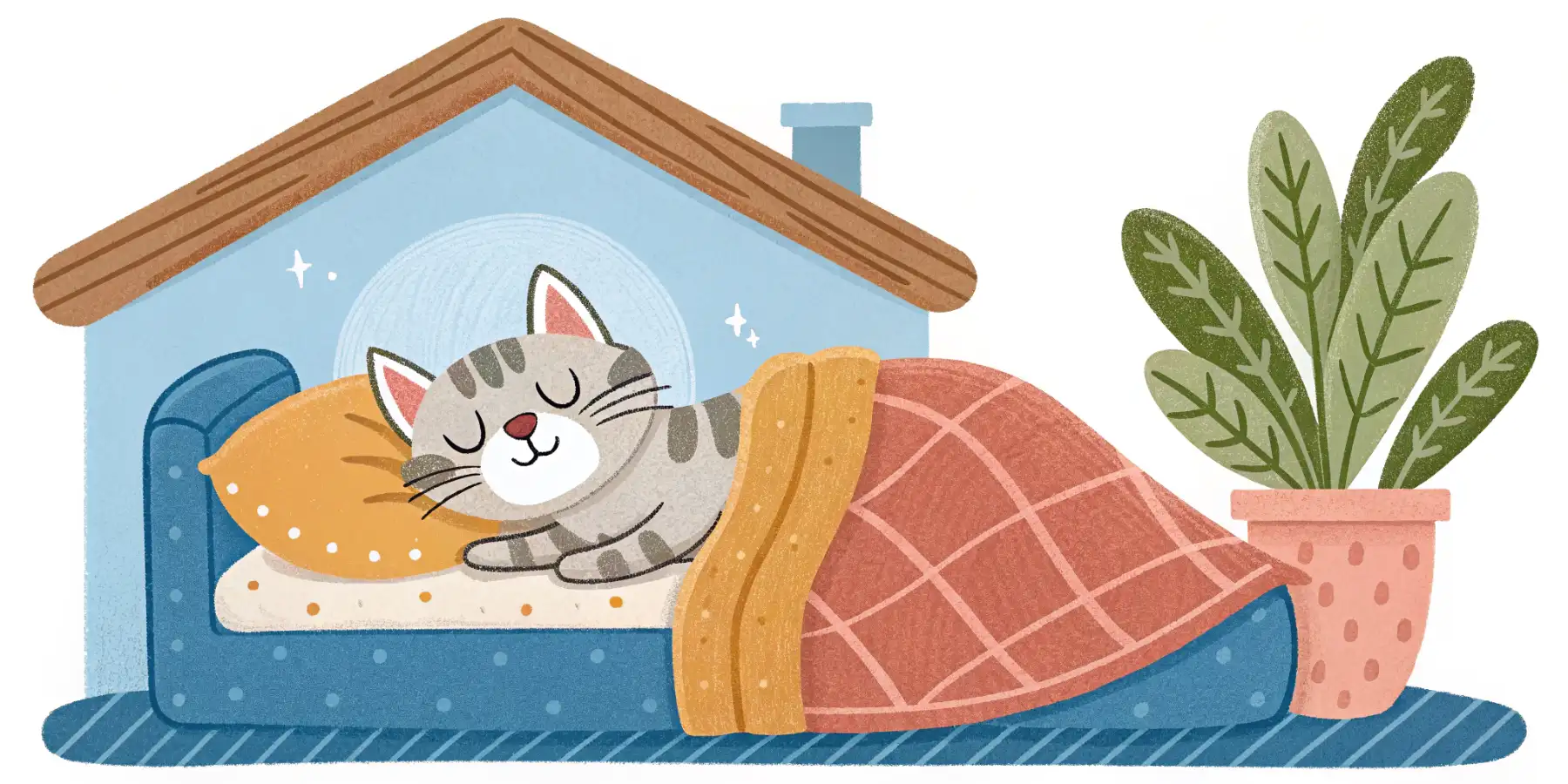
Decoding Cat Behavior: A Purrfect Guide
Is your cat a mystery? Unlock the secrets of *cat behavior*! Our guide helps you understand your feline friend's purrs & quirks. Read more!
Understanding Cat Behavior: A Comprehensive Guide for Cat Lovers
Cats. Those enigmatic, independent, and utterly captivating creatures that have somehow convinced us to share our homes and hearts. As a veterinary professional with years of experience observing feline antics, I can tell you that understanding cat behavior is key to building a strong and loving relationship with your furry friend. It’s more than just knowing when they’re hungry; it’s about deciphering their complex language, understanding their social needs, and creating an environment where they feel safe and secure.
 Image: A cat kneading a soft blanket. Understanding cat behavior includes recognizing signs of comfort and contentment, like kneading.
Image: A cat kneading a soft blanket. Understanding cat behavior includes recognizing signs of comfort and contentment, like kneading.
Decoding the Feline Language: Body Language Basics
One of the most crucial aspects of understanding cats is learning to interpret their body language. Cats are masters of subtle communication, and paying attention to their posture, tail movements, and facial expressions can reveal a wealth of information.
- Tail Talk: A raised tail generally signifies happiness and confidence. A twitching tail can indicate excitement or agitation. A tucked tail usually means fear or submission. A puffed-up tail? Stand back – your cat is likely feeling threatened and trying to appear larger. Pay close attention to the angle and movement of the tail in relation to the situation.
- Ear Signals: Upright ears indicate alertness. Ears turned to the side or back suggest anxiety or fear. Flat ears – also known as “airplane ears” – are a clear sign of aggression or annoyance.
- The Eyes Have It: Dilated pupils can indicate fear, excitement, or playfulness. Constricted pupils usually mean aggression or focus. A slow blink is a cat’s way of saying “I trust you” or “I feel comfortable.” Try slow blinking back at your cat – it’s a great way to bond!
- Posture: A relaxed cat will often lie stretched out or curled up, with loose muscles. A tense cat will be stiff and alert, ready to react. A cat rolling on their back is not always an invitation for a belly rub! Often, it’s a sign that they feel comfortable and secure, but proceed with caution – some cats are very protective of their bellies.
The Melody of Meows: Understanding Cat Vocalizations
While body language is essential, vocalizations also play a significant role in cat communication. From the gentle purr to the demanding meow, each sound has a specific meaning.
- Purring: Usually associated with contentment, but it can also indicate a cat is trying to self-soothe when stressed or in pain. Understanding cat purring nuances requires considering the context.
- Meowing: Adult cats rarely meow at each other; it’s primarily reserved for communicating with humans. A short meow is often a greeting, while a longer, more insistent meow likely means your cat wants something (food, attention, or to be let outside).
- Hissing and Growling: Clear warning signs of aggression or fear. Give your cat space and try to identify the source of their distress.
- Chirping and Trilling: These are often sounds of excitement and anticipation, particularly when a cat is watching birds or other prey.
- Yowling: This can indicate a variety of issues, including pain, confusion, or territorial disputes. If your cat starts yowling excessively, a vet visit is recommended.
 Image: A cat mid-meow. Understanding cat vocalizations like meowing can help you better understand your cat’s needs.
Image: A cat mid-meow. Understanding cat vocalizations like meowing can help you better understand your cat’s needs.
Decoding the Mystery: Understanding Cat Social Needs
Cats are often perceived as solitary creatures, but the reality is far more complex. While they are certainly more independent than dogs, cats still have social needs that must be met for their well-being.
- The Importance of Play: Play is crucial for cats of all ages. It allows them to express their natural hunting instincts, burn energy, and bond with their humans. Providing interactive toys and engaging in regular play sessions is essential for a happy and healthy cat.
- Scratching is Natural: Scratching is not just about sharpening claws; it’s also a way for cats to mark their territory and stretch their muscles. Providing appropriate scratching posts (vertical and horizontal) can help redirect this behavior away from your furniture.
- Territorial Considerations: Cats are highly territorial animals. Providing them with their own safe spaces (beds, perches, hiding spots) can help them feel secure and reduce stress. If you have multiple cats, ensuring they have enough resources (food bowls, litter boxes, scratching posts) to avoid competition is paramount.
- Social Interaction (or lack thereof): Some cats thrive on social interaction with other cats or humans, while others prefer solitude. Understanding your cat’s individual personality and respecting their preferences is key. For example, I have a cat, Mittens, who would rather spend her days sleeping in a sunbeam than engaging in playtime with my other cat, Jasper. I respect her need for space and make sure Jasper doesn’t overwhelm her.
- The Myth of the Solitary Cat: While cats can be independent, they’re not necessarily solitary. Many cats enjoy companionship with other cats, especially if they’ve been raised together. Observe your cats’ interactions closely; are they grooming each other, playing together, or constantly fighting? This will help you determine if they’re truly compatible.
Common Cat Behavior Problems and Solutions
Even with a deep understanding of cat behavior, problems can sometimes arise. Here are a few common issues and potential solutions:
- Inappropriate Elimination (urinating or defecating outside the litter box): This can be due to a variety of factors, including medical issues, stress, litter box aversion, or territorial marking. A vet visit is crucial to rule out any underlying health problems. Ensure you have enough litter boxes (one per cat, plus one extra), that they are cleaned regularly, and that they are placed in quiet, accessible locations.
- Scratching Furniture: Provide appropriate scratching posts and redirect your cat’s scratching behavior. You can also use deterrent sprays or double-sided tape to protect your furniture.
- Aggression: Determine the cause of the aggression (fear, territoriality, pain) and address it accordingly. Consult with a veterinarian or a certified cat behaviorist for guidance.
- Excessive Meowing: Identify the reason for the meowing (hunger, boredom, attention-seeking) and address it accordingly. Ensure your cat has plenty of enrichment activities and that their needs are being met.
 Image: A cat happily scratching a scratching post. Providing appropriate scratching outlets is crucial for preventing furniture damage.
Image: A cat happily scratching a scratching post. Providing appropriate scratching outlets is crucial for preventing furniture damage.
The Rewards of Understanding
Understanding cat behavior is a journey of observation, empathy, and continuous learning. By paying attention to your cat’s body language, vocalizations, and unique personality, you can build a stronger bond, create a harmonious home environment, and ensure your feline companion lives a happy and fulfilling life. It’s about truly listening to what they’re trying to tell you, even when they’re not using words. In my experience, the effort is always worth it. Knowing your cat is happy and thriving is one of the most rewarding aspects of pet ownership.


